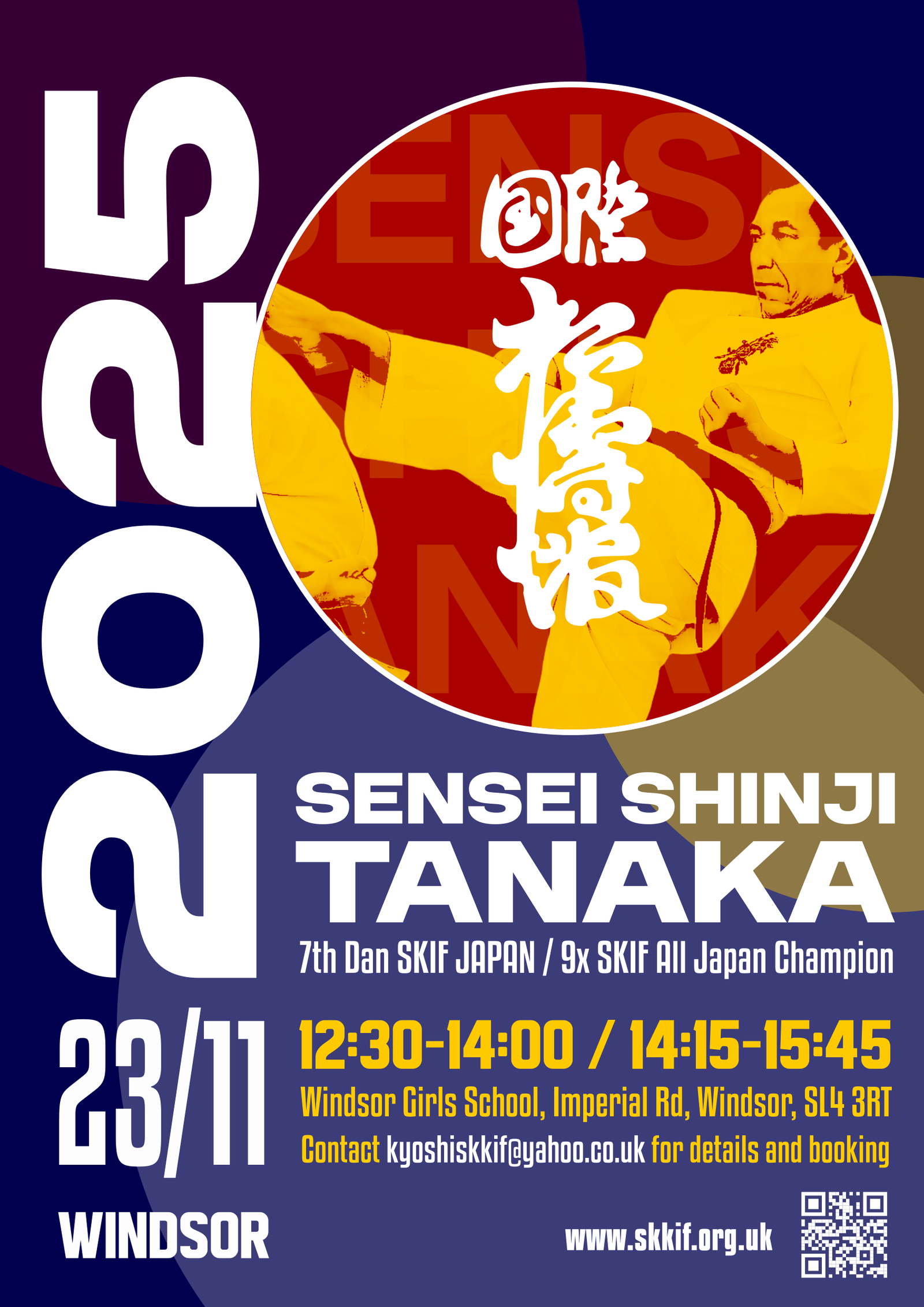
Master Gichin Funakoshi (1868-1957) is the founder of modern Karate.
Born in Shuri, Okinawa, he was trained as a boy by two famous masters of that time. Each trained him in a different Okinawan martial art. From Yasutsune Azato he learned Shuri-te. From Yasutsune Itosu, he learned Naha-te. It would be the melding of these two styles that would one day become Shotokan karate.
Funakoshi is the man who introduced karate to Japan when in 1917 he was asked to perform his martial art at a physical education exhibition sponsored by the Ministry of Education. He was asked back again in 1922 for another exhibition. He was asked back again a third time, but this time for the emporer and the royal family. After this Funakoshi chose to remain in Japan in order to teach and promote his art.
In 1938 after many years of teaching, Funakoshi and his students built the first Shotokan dojo in Tokyo. In 1949 Funakoshi’s students created the Japan Karate Association (JKA), with Funakoshi as the honorary head of the organization. It was during this period with the late Sensei Masatoshi Nakayama that Soke Kanazawa trained with the founders of modern day karate.
Funakoshi was a humble man. He preached and practiced an essential humility, rooted in the true perspective of things, full of life and awareness. He lived at peace with himself and with his fellow men.
Whenever the name of Gichin Funakoshi is mentioned, it brings to mind the parble of “A Man of Tao (Do) and a Little Man”. As it is told, a student once asked, “What is the difference between a man of Tao and a little man?” The sensei replies, “It is simple. When the little man receives his first dan (degree or rank), he can hardly wait to run home and shout at the top of his voice to tell everyone that he made his first dan. Upon receiving his second dan, he will climb to the rooftops and shout to the people. Upon receiving his third dan, he will jump in his automobile and parade through town with horns blowing, telling one and all about his third dan”.
The sensei continues, “When the man of Tao receives his first dan, he will bow his head in gratitude. Upon receiving his second dan, he will bow his head and his shoulders. Upon receiving his third dan, he will bow to the waist and quietly walk alongside the wall so that people will not see him or notice him”.
Funakoshi was a man of Tao. He placed no emphasis on competitions, record breaking or championships. He placed emphasis on individual self-perfection. He believed in the common decency and respect that one human being owed to another. He was the master of masters.
Gichin Funakoshi passed away in 1957 at the age of 88. Aside from creating Shotokan karate and introducing it to Japan and the world, he also wrote one of the founding manuscripts on the subject of karate, “Ryukyu Kempo: Karate-do”. His other books included “Karate-Do Kyohan” – The Master Text or the “handbook” of Shotokan and his autobiography, “Karate-Do: My Way of Life”.
These books and his art are a fitting legacy for such a humble and gentle man.
There are a great many materials available on Gichin Funakoshi, with an even more in-depth view of his life available on the SKIF website.

